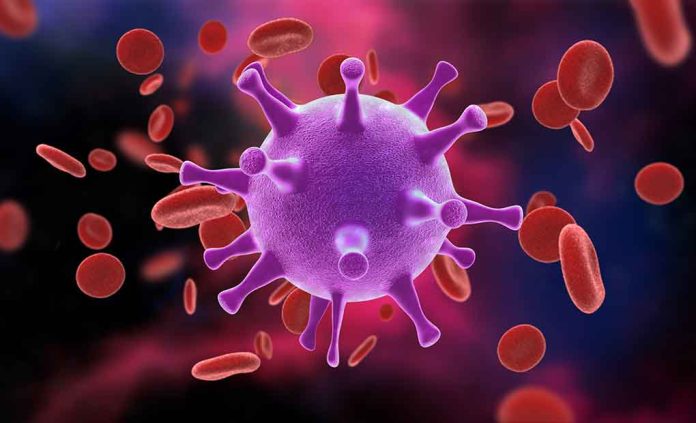
Hawaii’s whooping cough cases have surged to alarming levels with 108 confirmed infections by mid-May 2025, drastically outpacing last year’s totals and raising serious concerns about declining vaccination rates in the popular tourist destination.
Key Takeaways
- Hawaii has reported 108 pertussis (whooping cough) cases in 2025, already exceeding the 84 total cases from 2024
- Whooping cough is highly contagious, spreading through respiratory droplets, with symptoms that can progress from cold-like to severe coughing fits
- Infants under one year face the highest risk of hospitalization and potentially fatal complications
- Hawaii’s vaccination rates have fallen below national averages since 2019, contributing to the disease’s resurgence
- Health officials recommend DTaP vaccines for children and Tdap boosters for adolescents, adults, and especially pregnant women
Rising Infections Alarm Health Officials
The Hawaii Department of Health has issued urgent warnings as pertussis cases continue their concerning trajectory across the islands. With 108 cases already confirmed by mid-May, health authorities are witnessing a substantial increase compared to last year’s total of 84 cases. This uptick coincides with troubling data showing Hawaii’s vaccination rates have declined since 2019, dropping below national averages and creating conditions ripe for disease spread. Pertussis, commonly known as whooping cough, poses particular dangers in an island state that welcomes millions of tourists annually, potentially exposing both visitors and residents to this highly contagious respiratory illness.
The infection’s deceptive nature compounds the challenge for health authorities. “Pertussis is insidious and can be easily mistaken for other respiratory diseases, including viruses,” Stated Dr. Marc Siegel.
What begins with seemingly innocuous cold-like symptoms can rapidly progress to severe, uncontrollable coughing fits that produce the characteristic “whooping” sound in children as they gasp for air between episodes. Without prompt treatment, patients face risks of serious complications including pneumonia, seizures, brain damage from oxygen deprivation, and even death—particularly among vulnerable populations like infants and the elderly.
Vaccination Remains Key to Prevention
Health officials emphasize that vaccination stands as the most effective defense against the pertussis surge. The Department of Health has been unequivocal in its guidance: “The most effective way to prevent pertussis is through vaccination with either the DTaP (diphtheria, tetanus and pertussis) or Tdap (tetanus, diphtheria and pertussis) vaccines. Multiple doses are recommended for infants, children and adults,” The vaccination protocol typically includes a series of shots beginning in infancy, with boosters recommended for adolescents and adults to maintain immunity.
Medical experts point to strong evidence supporting vaccine efficacy. “The DTaP (diphtheria, tetanus, pertussis) vaccine offers strong protection to children — about 98 out of 100 children are protected for at least a year after the fifth dose, and about 70% are still protected for up to five years,” Said Neha Pathak, MD.
This high level of protection underscores why public health officials are pushing for increased vaccination compliance across all populations, particularly among those who regularly interact with infants too young to be fully immunized.
Protecting the Most Vulnerable
Infants under one year old face the gravest danger from pertussis infection, with hospitalization rates significantly higher than other age groups. Since babies cannot receive their first DTaP vaccine until they are two months old, and aren’t fully protected until completing the initial series, they remain vulnerable during their earliest months. This reality has prompted health officials to emphasize the concept of “cocooning” – ensuring all family members and caregivers around newborns are fully vaccinated to create a protective buffer against transmission.
“The best protection is for everyone around them to be vaccinated,” Said Dr. Marc Siegel This strategy extends particularly to expectant mothers, who are advised to receive the Tdap vaccine during their third trimester. This timing allows maternal antibodies to pass to the baby before birth, providing crucial protection during the infant’s first months when they’re most vulnerable to severe complications from whooping cough.
Measles Threat Compounds Health Concerns
While Hawaii battles the pertussis surge, health officials are simultaneously monitoring the potential threat of measles importation from the mainland. The DOH reports that while no new measles cases have appeared since two travel-related infections in early April, the situation remains precarious with over 1,000 cases reported across 30 states. This dual threat highlights the consequences of declining vaccination rates and the interconnected nature of public health challenges in a state dependent on tourism and travel. The proximity of these threats has prompted renewed calls for vaccination vigilance.
“DOH recommends continued vigilance and efforts to increase the MMR (measles, mumps and rubella) vaccination rate. High vaccination rates protect individuals and communities and prevent cases from becoming outbreaks,” This emphasis on community-wide protection through vaccination highlights the public health principle of herd immunity – where sufficient vaccination levels within a population can effectively prevent disease spread even to those who cannot be vaccinated for medical reasons.













